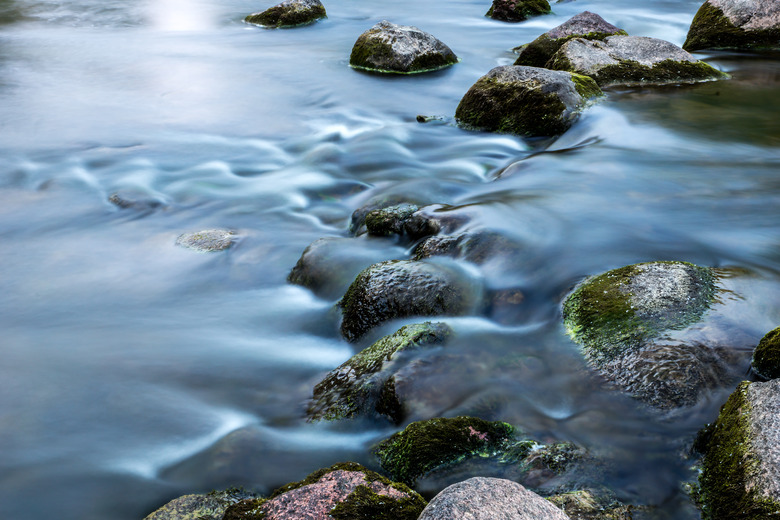What Are Examples Of Mechanical Weathering?
Mechanical weathering refers to physical processes that break down the structure of rocks. Mechanical weathering differs from chemical weathering, the process by which rocks are broken down by reactions among chemicals inside and outside the rock. You can observe mechanical weathering's effects nearly anywhere. In addition to producing some of the most impressive rock formations on Earth, mechanical weathering is responsible for the cracked and smoothed rocks found most everywhere.
TL;DR (Too Long; Didn't Read)
Examples of mechanical weathering include frost and salt wedging, unloading and exfoliation, water and wind abrasion, impacts and collisions, and biological actions. All of these processes break rocks into smaller pieces without changing the physical composition of the rock.
Frost and Salt Wedging
Frost and Salt Wedging
One of the more common forms of mechanical weathering is frost wedging. This occurs when water enters into the small holes and gaps in rocks. If the water in the gap freezes, it expands, splitting the existing gaps into wider cracks. When the water thaws, the wider gaps allow even more water to enter the rock and freeze. Frost wedging repeated over months or years turns microscopic gaps in the rock into large cracks.
Salt wedging also involves water intruding into rocks. When water containing salt evaporates from within a gap in a rock, the salt is left behind. Over time, salt builds up, creating pressure that widens the gaps and eventually splits the rock.
Unloading and Exfoliation
Unloading and Exfoliation
Many rocks form deep beneath the surface of the Earth under conditions of intense pressure; hundreds of tons of rock or ice often press down on them. If the rocks above these rocks erode, or the ice above them melts, the release of this weight causes the rock to expand upward and crack at its top. Unloading occurs when the overlying weight releases. When a rock expands and cracks this way, the top of the rock may split into sheets that slide off the exposed rock. This process is called exfoliation.
Water and Wind Abrasion
Water and Wind Abrasion
Abrasion occurs when the surface of rocks is exposed to water or wind. These elements carry tiny particles of sediment or rock that then collide against the rock's surface. When these particles rub against the rock's surface, they break off tiny pieces of the rock. Over time, abrasion wears down and smooths both large and small rocks.
Impact and Collision
Impact and Collision
Mechanical weathering result from more dramatic and sudden physical processes. In a landslide or avalanche, falling matter dents or shatters rocks within and below the fall. Falling rocks break by colliding with rocks below or become smoothed by rolling against other rocks in a process similar to abrasion.
Interactions With Organisms
Interactions With Organisms
Interactions with organisms also cause physical weathering. If you've ever seen a sidewalk that has buckled because of a tree root, you've seen this process in action. Roots grow into small spaces and cracks in rock; when they expand, they exert pressure on the rock around them and widen the cracks. On a smaller scale, lichens send tiny tendrils into the spaces between rock minerals, loosening and eventually separating the particles from the main body of the rock.
Animals also contribute to mechanical weathering. Digging animals such as moles break apart rocks underground, while the movement of animals on surface rock can scratch the rock's surface or exert pressure that causes the rock to crack.
Cite This Article
MLA
Zamboni, Jon. "What Are Examples Of Mechanical Weathering?" sciencing.com, https://www.sciencing.com/examples-mechanical-weathering-6174539/. 23 April 2018.
APA
Zamboni, Jon. (2018, April 23). What Are Examples Of Mechanical Weathering?. sciencing.com. Retrieved from https://www.sciencing.com/examples-mechanical-weathering-6174539/
Chicago
Zamboni, Jon. What Are Examples Of Mechanical Weathering? last modified March 24, 2022. https://www.sciencing.com/examples-mechanical-weathering-6174539/
